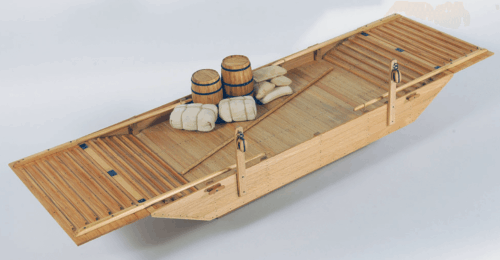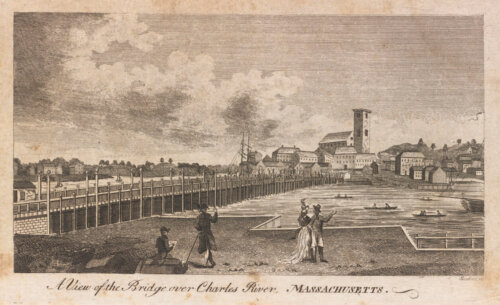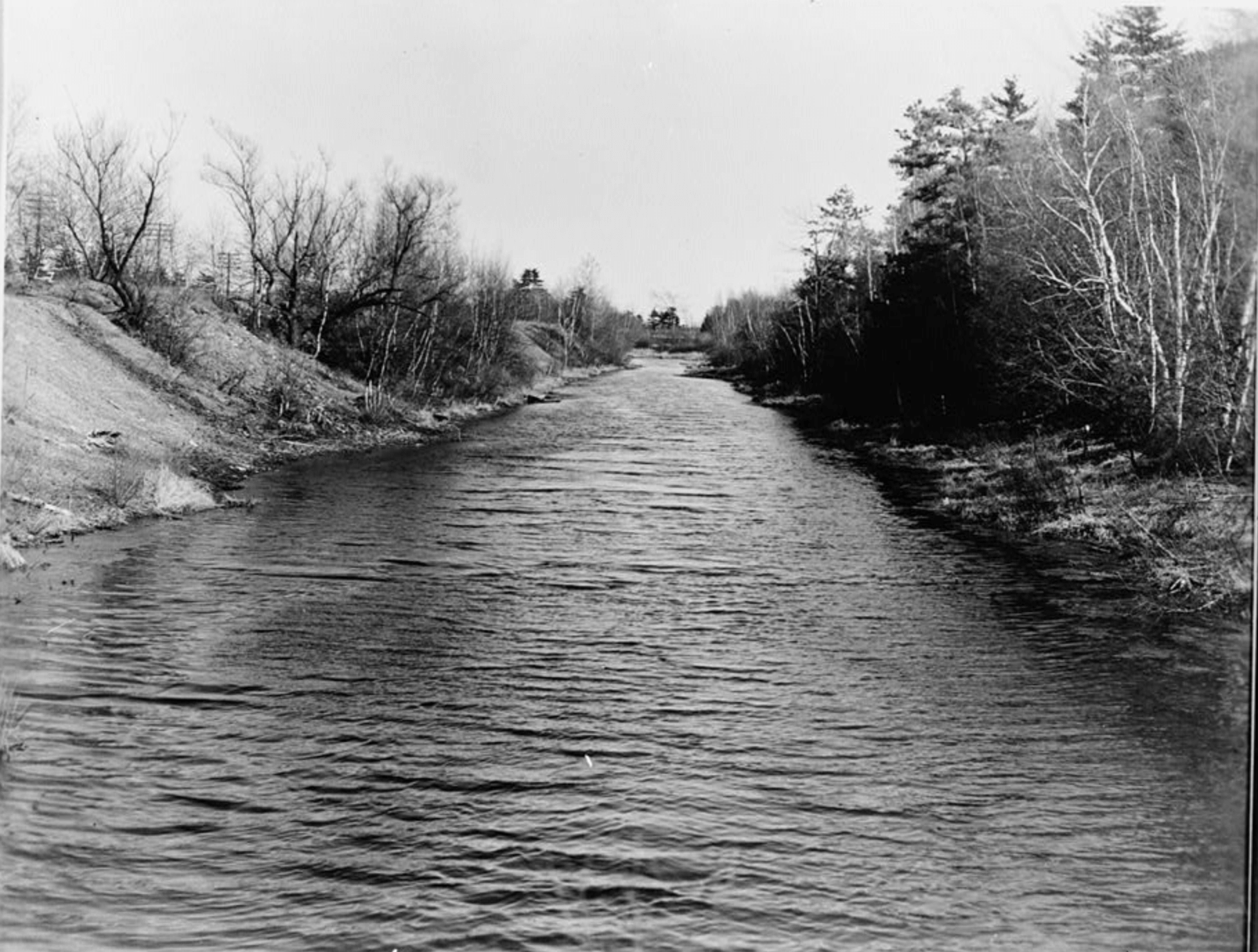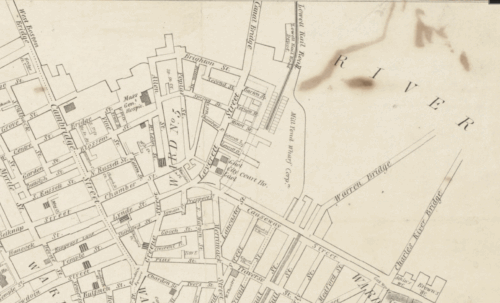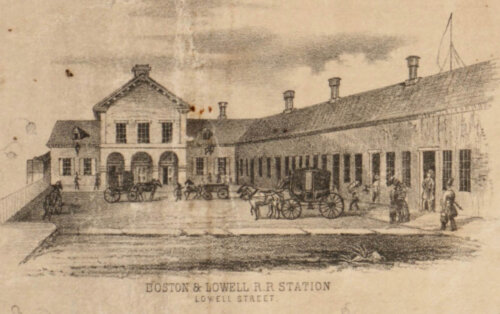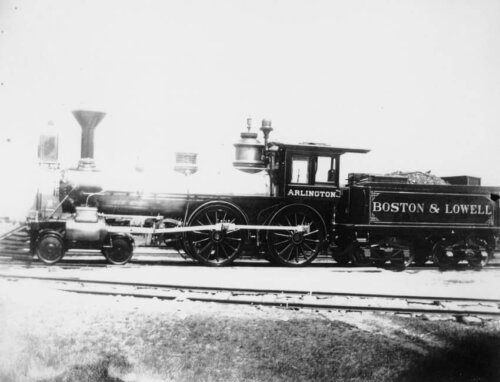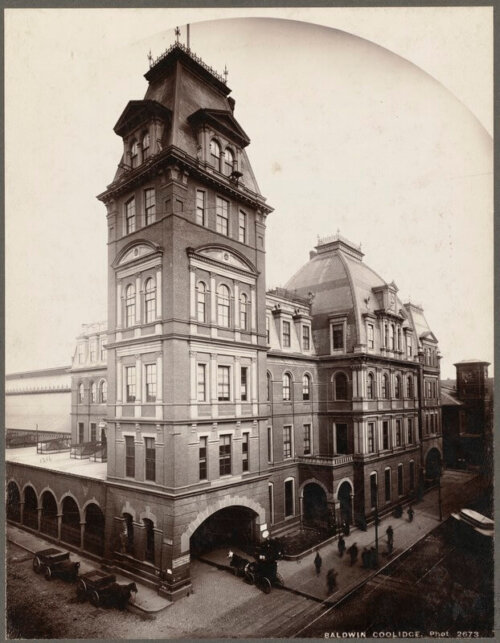From Canal to Rail: The Birth of the Boston & Lowell Railroad
The Boston and Lowell Railroad, New England’s first passenger train service, built its first Boston depot on Lowell Street in the West End. It would help replace the Middlesex Canal as the primary means to move people and goods in and out of the city. The Boston and Lowell paved the way for multiple railroads and depots surrounding the Bulfinch Triangle, establishing the West End as Boston’s northern rail hub, a tradition which continues to this day.
From the earliest days of its European settlement, Boston and neighboring towns sought transportation solutions to best move people and commercial goods onto and off the Shawmut Peninsula. The Charles River was the major obstacle between Boston and points north, and as early as 1631, Edward Convers started a ferry service between Boston and Charlestown and then Cambridge. The ferry could only accommodate small loads and had to practically shut down in winter. The first bridge to connect Boston to the north, the Charles River Bridge, opened in 1786, and though it enabled a constant flow of ground transportation, the volume of movement was limited to what could be carried on horses and coaches.
An alternative appeared in 1793, when a group of businessmen from Medford, Massachusetts formed a company called The Proprietors of the Middlesex Canal with the goal of building a canal from the Merrimack River to Boston. Opened in 1803, the 27 mile long Middlesex Canal ran from the Merrimack River to the Charlestown Mill Pond. Canal boats had to be poled across the river between Charlestown and Boston, but the later addition of the Blackstone Canal (along modern day Canal Street) allowed a quicker route to the vicinity of Boston Harbor. The Middlesex Canal greatly increased the movement of “goods, produce and lumber from New Hampshire and Vermont” and “English manufactured goods, codfish, mackerel, salt, lime, and plaster” produced in Boston.
The limitations of the Middlesex Canal began to show only twenty years later as the textile industry began to boom in the Merrimack valley. Factories sprung up in the Massachusetts towns of Haverhill, Lawrence and Lowell, and Manchester and Nashua, New Hampshire. Businessmen debated the possibility of hauling larger volumes of freight overland and overcoming the limited capacity of canal boats and disruptions during winter. News of the first railroad experiments in England begged the question for many: “Might the invention of Railways come in aid and surmount the difficulties which occur in the Waterways?”
The major mill owners in Lowell, led by Francis C. Lowell and Nathan Appleton, along with Kirk Boott Patrick Jackson, won government permission in 1830 “to locate, construct and finally complete a Railroad, at, or near the City of Boston, and thence to Lowell, in the County of Middlesex” and “to erect a Bridge in the direction which shall be found most convenient for the said Railroad, across the waters of Charles River”. This venture, which would become the Boston and Lowell Railroad was essentially granted a 30 year monopoly for its 26 mile railway which initially ran between terminals in Lowell and Boston, which finished at a a modest depot on Lowell Street near the West End docks. The Proprietors of the Middlesex Canal fought against the new railroad and failed. Although it actually saw an increase and revenue during the construction of the railway, mainly from material carried by canal boats for the new railroad, the Middlesex Canal faced its gradual end (closing completely in 1853).
The Boston and Lowell service began in the summer of 1835 with passengers only, the first such service in New England, and eventually moved into freight operations. Its first locomotive, steam driven and purchased in England was named “Stephenson” (after George Stephenson the English “Father of Railways”) and could travel at 20 mph. The railroad was an instant success and eventually expanded its reach as far north as Canada. With its growth came a need to expand its original depot on Lowell Street. It purchased land on Causeway Street and hired Architect Edgar Allen Poe Newcomb to oversee the project which ran from 1871 to 1878. Newcomb created a stunning French Second Empire design for the depot with a concourse “lined with oak walls and marble flooring”.
The Boston & Lowell, as was the case of all the railroads along Causeway Street, was purchased by the Boston and Maine Railroad in 1877 and continued to run under this new parent for another hundred years. Gradually even the advantages of rail service had paled against the advance made in the combustion engine and the construction of an interstate highway system. By the 1970s, the once mighty Boston & Maine faced bankruptcy and in 1973 was forced to sell off most of its assets, including the Lowell line, to the MBTA. Today, a rider out of North Station on the MBTA Commuter Rail can ride along the same path as the Boston and Lowell, the West End’s first railroad.
Article by Bob Potenza, edited by Jaydie Halperin
Sources: Arlington Historical Society; Boston Public Library; Buildings of New England, “Old Boston North Union Station // 1893-1927”; Boston and Maine Railroad Historical Society, “A Brief History of the Boston and Maine Railroad”; CHARTER OF THE Boston and Lowell Rail- Road Corporation, AND REPORT OF THE DIRECTORS TO THE LEGISLATURE. (1848); Cary W. Holmes, “Towpaths to Oblivion: The Middlesex Canal and the Coming of the Railroad 1792-1853.”, Federal Reserve Bank of Boston, Mass.: Northeastern Univ., Boston, Mass. Bureau of Business And Economic Research, 1975.; Library of Congress; Moses Whitcher Mann, A PIONEER RAILROAD AND HOW IT WAS BUILT. [Read before the Medford Historical Society, April ao, 1908.]; Massachusetts. General Court. Joint Standing Committee on Railways and Canals, Report of affairs of the Boston & Lowell Railroad, 1850; Massachusetts Historical Commission, “Boston & Maine RR: Lowell & Lawrence Railroad Bridge”; SUMMER SAUNTERINGS BY THE B. AND L.: A GUIDE TO PLEASANT PLACES AMONG THE MOUNTAINS, LAKES AND VALLEYS OF NEW HAMPSHIRE, VERMONT, AND CANADA., BOSTON & LOWELL RAILROAD, 1885; The West End Museum


